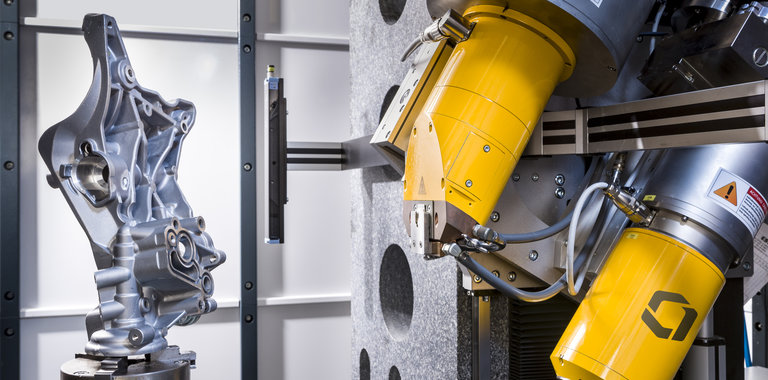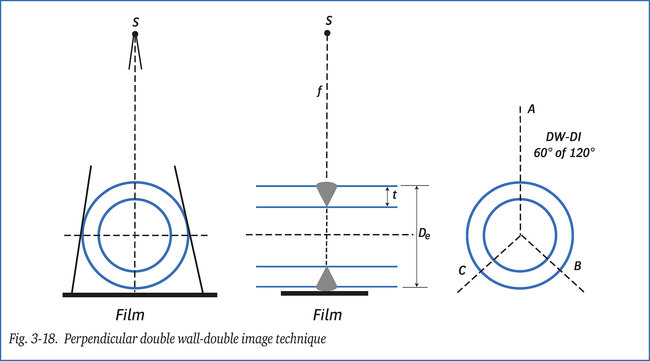
小径管溶接用の X 線撮影技術
For pipe welds, the single wall-single image technique (SW-SI), or if this is not feasible, the double wall-single image technique (DW-SI) is to be applied. For small diameter pipes this alternative is not really practical, as a disproportionate number of double wall-single image
exposures needs to be made due to the limited effective film length (see section). In such a case the double wall-double image technique should be used (DW-DI). Normally, the DW-DI technique is only applied on diameters <75 mm and wall thickness of <8 mm. Both, the weld on the source side and film side of the pipe are simultaneously interpreted.
Two more DW-DI techniques are suitable for small diameter pipes:
- the elliptical technique and
- the perpendicular technique
楕円形テクニック
図 2-18 に示されている楕円形テクニックは推奨テクニックですが、次の条件が満たされた場合
のみ適用してください。
- 外部の直径 (De) が 100 mm 未満 (実際には 75 ㎜)
- 壁の厚さ (t) が 8 ㎜ 未満
- 溶接の幅 De /4 未満
露光の数は、壁の厚さ (t) と 直径 (De) の関係によって
決まります。 t / De が 0.12 未満の場合、100% のカバレッジには 2 つの画像 (相互に 90° 回転済み) で
十分です。 t / De が 0.12 以上の場合、3 つの露光
(相互に 60 または 120°回転済み) が
100% の検査とみなされます。
楕円形露光テクニックを使用すると、線源側とフィルム側の溶接画像はお互いの横に
個別に表示されます。 2 つの溶接画像の距離は、
溶接幅 1 つ分程度である必要があります。 これには、溶接に対して垂直な、
一定の量の線源オフセット (V) が必要となります。 オフセットは、以下の公式で
計算できます。
垂直テクニック
楕円形テクニックが実用的でない場合、代わりに垂直テクニックを
使うことができます (図 3-18 参照)。 たとえば、壁の厚さが異なるパイプが接合されている、もしくはパイプが 45 °/ 90 ° 曲がって
接合されている場合がそうです。
円周状に等しく分割された 3 つの露光は、100% カバレッジに十分です。




